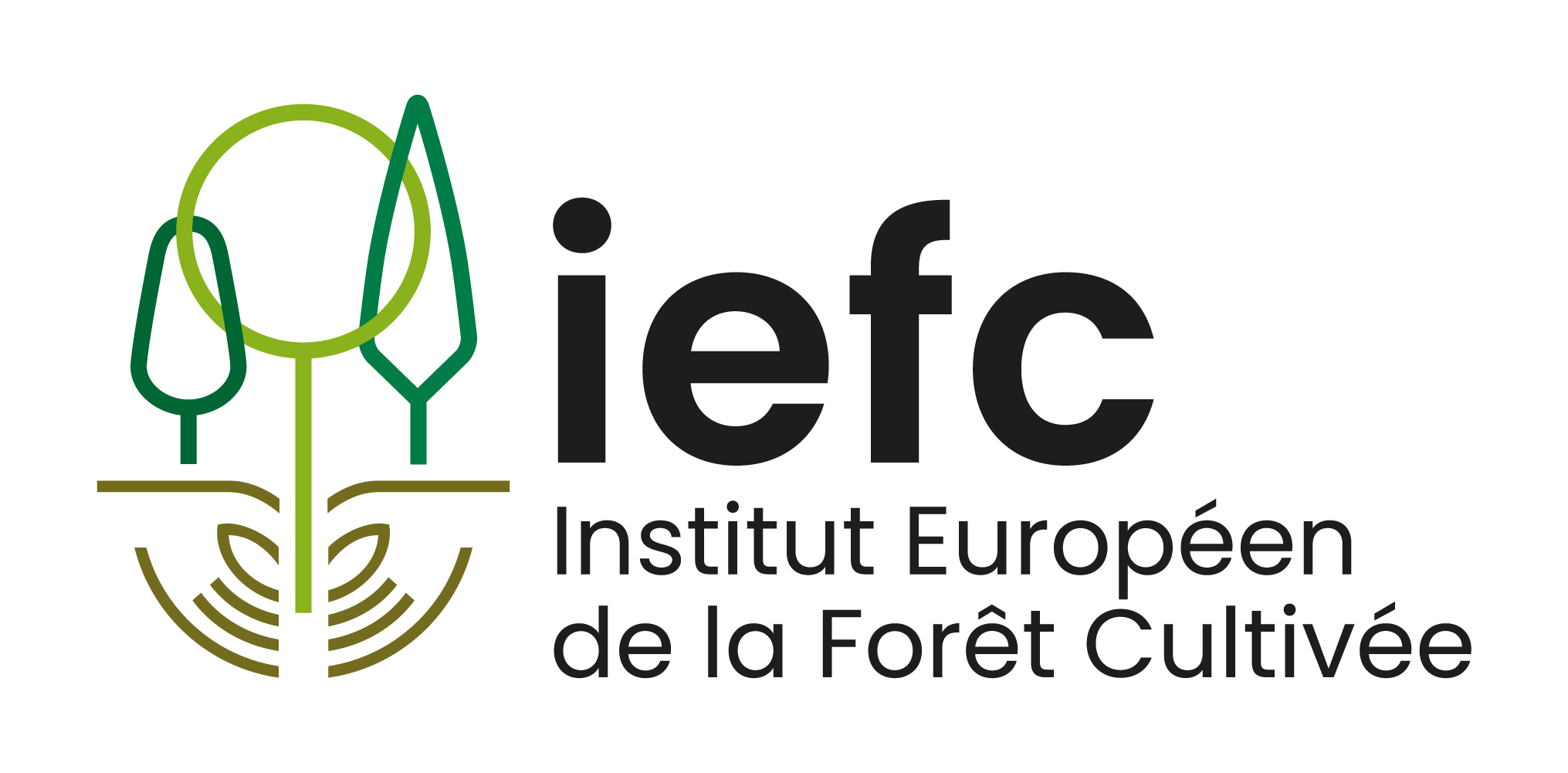Cécile Nivet, RMT AFORCE project manager, CNPF-IDF; François Morneau, RMT AFORCE coordinator, CNPF-IDF; Christophe Chantepy, national DFCI expert, ONF; Eric Rigolot, research engineer, INRAE – URFM; Isabelle Bertrand, DFCI project manager, MASA; Philippe Riou-Nivert, engineer, CNPF-IDF.
The challenges of improving forest fire protection are numerous and complex. They require the coordination of a wide range of players with diverse skills. For R&D[1] , this work offers interesting prospects, some of which are already being addressed within the AFORCE RMT.
Around 120 people met in the Paris region on 20 and 21 March at the new AgroParisTech Campus (Saclay) to discuss forest fire risk prevention, a theme that cuts across the priorities of the AFORCE Network[2].
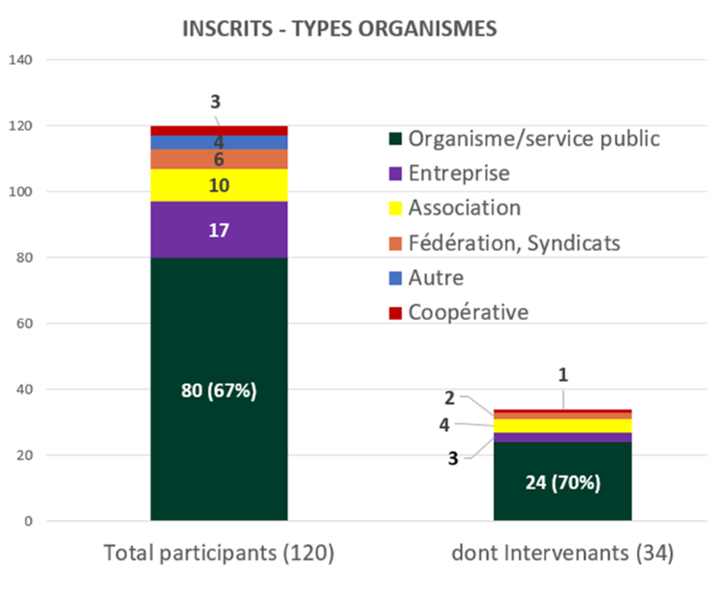
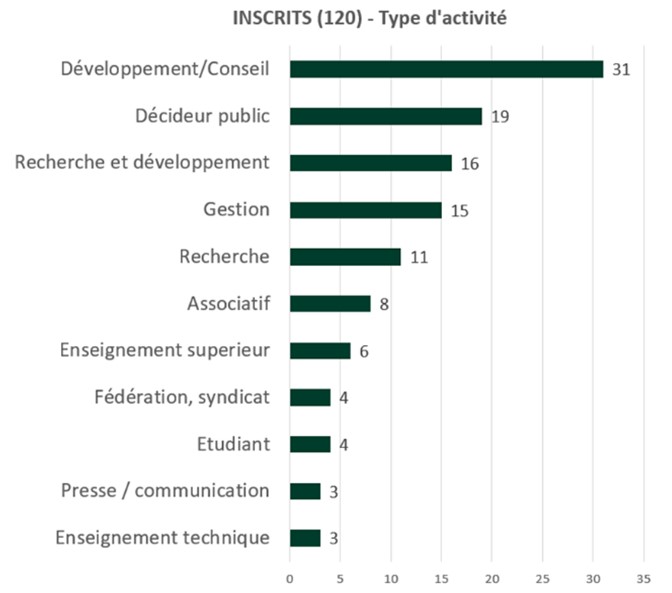
Focusing on prevention and preparation, two key stages in crisis management, these two days provided an opportunity to redefine concepts. Of particular note was the importance of not limiting risk assessment to hazard measurement. In particular, we saw how important it is to identify the issues at stake and the potential damage, which are themselves associated with vulnerability.
What is the current state of risk and its evolution?
At European level, we have seen a steady increase in the number of fires over the last twenty years (2006-2023), with a notable rise in the number of large fires in certain countries such as Portugal, Greece and France.
In France, the IGN presentation highlighted the importance of collecting long-term data on forest fires, in particular to support prevention policies and assess their effectiveness.
Climate forecasts predict an increase in risk
Models at both European and national level show an increase in risk levels, with larger areas burnt. In France, climate projections for the medium and long term predict in particular :
- an exacerbation of vulnerability to fire in areas that were already particularly affected (historical areas);
- a geographical extension from the latter, forming a crescent between the South-East, South-West, Centre-West and West;
- an expansion in time, with a significant lengthening of the sensitive period, particularly in the South-West;
- a greater likelihood of synergy between the size and power of forest fires.
Projections cannot easily incorporate the dynamics of combustible vegetation, but its sensitivity is likely to increase throughout the region as a result of climate change.
What are the regulatory and organisational changes?
These two days provided an opportunity to review the current operation of the DFCI and to understand the changes underway, whether at the legislative, regulatory or organisational level. Generally speaking, the challenges of improving forest fire protection are numerous and complex, as they require the coordination of a wide range of stakeholders and skills.
Regulations are evolving but not yet going far enough
The Law of 10 July 2023 is being implemented (at a snail’s pace) through seven implementing decrees, including one on the legal obligation to clear brushwood (OLD). Although eagerly awaited, these developments were put into perspective by speakers who called for a paradigm shift in public policy to face the future: we are not yet moving fast enough, or hard enough. The development of an integrated prevention-prevention-fighting approach, broken down into three geographical sectors (Historical territories, New fire territories, Territories of future extension) met with the support of the participants.
Awareness-raising and training: strategic aspects of prevention
As 90% of fires are caused by human activity, awareness-raising and support measures (for civil society, landowners, etc.) are a key component in reducing the risks, as many stakeholders (ONF, FNCOFOR, CNPF, etc.) have pointed out.
Training and experience-sharing initiatives are also beginning to be developed in the “new fire areas”, such as in the Centre-Val de Loire region (multi-partner reflection led by the DRAAF with joint “Foresters-Fire brigade” training courses), in the Vosges (development of shared toolkits between chambers of agriculture) or in protected areas (sharing of good practice between very affected regions and new regions).
Developing the prevention framework
António Salgueiro’s enlightening presentation on the development of an Integrated Fire Management system in Portugal following the deadly fires of 2017 (100 dead, 500,000 ha burnt) nevertheless showed that any system has its limits when extreme conditions give rise to very intense fires. The approach of trying to totally eradicate the risk appears to be both illusory and counter-productive compared with that of prioritising the issues at stake.
What’s the outlook for R&D?
With regard more specifically to research and development, we have seen that there is no shortage of prospects, particularly in terms of:
- simulation models and tools, to gain a better understanding of certain phenomena (outbreaks, propagation) or to predict the development of areas at risk in the context of climate change. The European FIRE-RES project shows that these approaches can be used to optimise land-use planning (so as to limit the risks of fire spreading) and that they could even be used by fire-fighting services to better anticipate the progression of fire fronts by feeding models with data collected in real time.
- remote sensing, in particular thanks to the IGN’s gradual deployment of HD Lidar technology, which will soon be used for a wide range of applications, including forest fire management. Prospects include the development of a national fuel map to better predict the power of fire, and work that is starting to improve our knowledge of the accessibility of forest areas (detection and characterisation of roads located in forested areas).
The R&D needs were presented by Frédéric Mortier (IGEDD) in his capacity as coordinator of the government mission on forest fires[3]. They involve continuing work and improving knowledge in the following areas:
- climate projections ;
- fire dynamics and the development of decision-support models (fire behaviour, etc.);
- forest dieback and pest dynamics (complex and poorly understood phenomena) ;
- water stocks and flows in the soil and vegetation, including root systems;
- silviculture and forest management choices with regard to vulnerability to fire ;
- impact of fires on biodiversity and post-fire recovery, carbon and greenhouse gases ;
- human and social sciences, in particular to better understand the profiles of arsonists.
Some of this work is already underway within the AFORCE network (see Box 2). Other work may soon be underway if its members see an interest in it, particularly as part of the network renewal programme for the period 2026-2029.
Towards multiple risk management?
Lastly, it was pointed out that the risks associated with forest fires interact with other risks, first and foremost those associated with the climate, particularly drought. In this context, it is impossible to deal with them in isolation. The participants agreed with this observation and the need to move progressively towards integrated risk management. The research needed to develop this multi-risk vision is currently underway as part of the PEPR FORESTT and should continue with the development of methods and tools to be devised in conjunction with the RMT AFORCE.
All the presentations given at the workshop are available online on the RMT AFORCE website (https://www.reseau-aforce.fr/). The proceedings of the workshop, which are currently being prepared, will also be published there shortly.
Thanks to our funders:
The event was actively supported by the French Ministry of Agriculture and Food Sovereignty and the national inter-professional body France Bois Forêt.
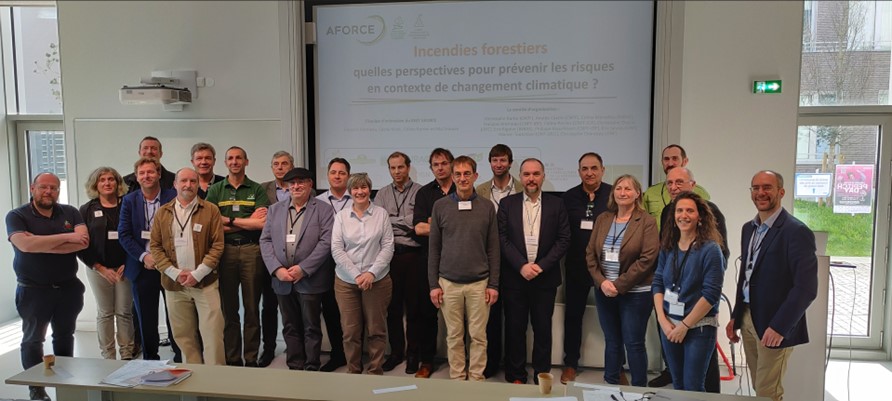
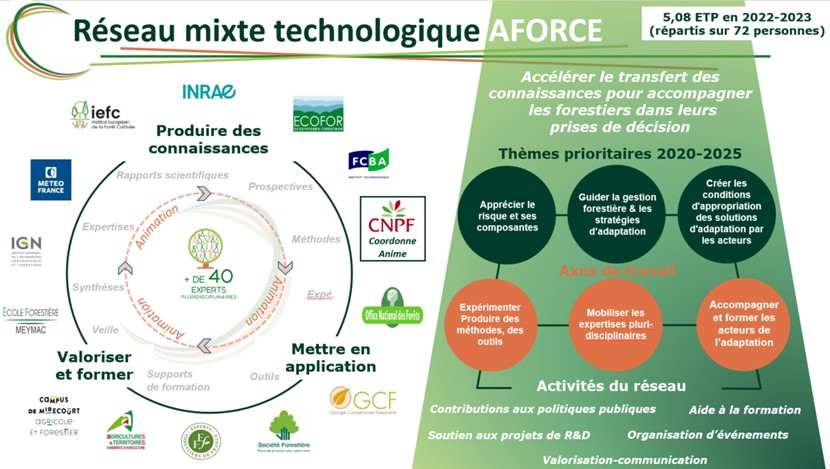
[1] Many of the ideas and points of view expressed by the speakers during the discussion sessions (the challenges facing private forests, the issue of property fragmentation, the integration of risk into town planning documents, the importance of the PDPFCI, etc.) are not included here, as a summary is devoted to them in this report.
[2] Launched in 2008 by foresters, the RMT AFORCE is a French network for adapting forests to climate change. Supported by the French Ministry of Agriculture and France Bois Forêt, it is coordinated by the R&D department of the Centre national de la propriété forestière (CNPF-IDF) and brings together 16 partners from research, development, management and higher and technical education: APCA, AgroParisTech, CA PDL, CNPF, EFF, EPLEFPA des Vosges, FCBA, GCF, Gip Ecofor, IEFC, IGN, INRAE, LEGTPA de Meymac, Météo-France, ONF and SF CDC. The network creates forums for exchange and produces a variety of resources (tools, training, summaries, etc.) based on the individual and collective expertise of its members. Its work benefits its members and, more broadly, all its target audiences (technicians, managers, advisers, teachers, etc.).
[3] Mortier F. et al., 2023. Mission report on the “Politique de prévention et de lutte contre l’incendie de forêt dans un contexte d’extension et d’intensification du risque dû au changement climatique. Tome 2: “S’adapter au changement d’ère: apprendre à vivre avec le feu pour les moyens et long terme” (July 2023)”. 248 pages.
Cécile Nivet, Project Manager RMT AFORCE, CNPF
